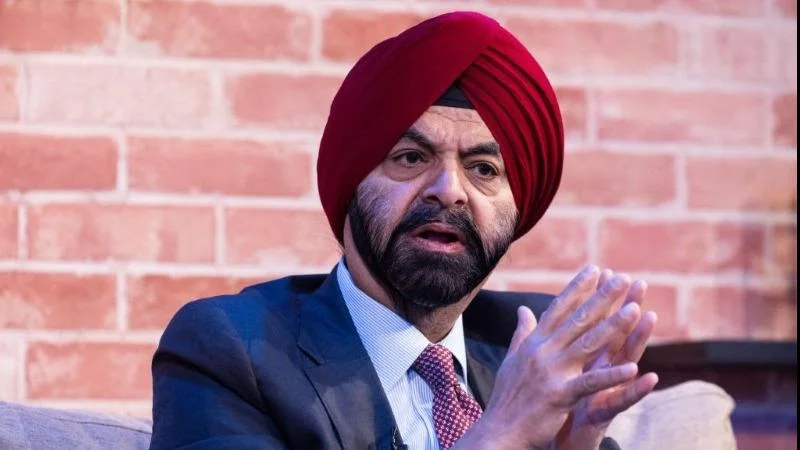Since 2014, the World Bank has played a significant role in supporting Ethiopia’s efforts to expand access to water, sanitation, and hygiene (WASH) services. Through its backing of the Government of Ethiopia’s One Water, Sanitation, and Hygiene National Program (OWNP), the World Bank has contributed to three major projects expected to benefit more than 20 million people by 2027.
The Ethiopia Water Supply, Sanitation, and Hygiene Project (EWSSHP), which ran from 2014 to 2021, provided over 10.9 million people with improved water supply and sanitation services. The ongoing One WASH-Consolidated Water Supply, Sanitation, and Hygiene Account Project (One WASH-CWA) is projected to reach another 8.6 million people by its conclusion in 2027. In addition, the Second Urban Water Supply and Sanitation Project aims to provide access for an additional 3.8 million urban residents.
Ethiopia faces substantial challenges in this sector. With a population exceeding 132 million as of 2024, about 60 million lack basic water supply while roughly 112 million do not have access to improved sanitation facilities. Around 22 million still practice open defecation as of 2025. These gaps contribute significantly to public health issues; it is estimated that between 60% and 80% of communicable diseases in Ethiopia are linked to unsafe water or poor hygiene practices.
The OWNP was launched in 2013 as a multi-phase program targeting universal access to integrated WASH services across rural and urban areas. It brings together several government ministries—including those responsible for water resources management, finance, health, and education—to coordinate planning and delivery.
A key feature of the program is the Consolidated WASH Account (CWA), an innovative financing mechanism introduced with World Bank support that allows donors such as UNICEF, the African Development Bank, Saudi Fund for Development, and development agencies from countries including the United Kingdom, South Korea, Finland, and the Netherlands to pool their contributions under unified processes guided by World Bank standards.
“Due to the absence of a secure space for changing and cleaning, I often found myself returning home and missing classes during my menstrual cycle. Now we have no worries about our monthly cycle thanks to the menstrual hygiene management rooms in the school,” said a ninth-grade student at Jaldessa Secondary School.
Facilities like these menstrual hygiene management rooms are part of broader efforts under OWNP’s CWA platform aimed at increasing school attendance among girls while reducing dropout rates.
Between EWSSHP’s launch in 2014 through its completion in 2021:
- Approximately 17,500 community water points were constructed or rehabilitated.
- Over one million improved latrines were built.
- More than ten thousand WASH facilities were added or upgraded at schools and health centers.
- About two million people received training on hygiene behavior—half of whom were women.
- Capacity building included training representatives from nearly ninety utilities across more than one hundred towns.
As of October 2025:
- The CWA has benefited around seven-and-a-half million people: nearly two million with new water supplies; five-and-a-half million with safe sanitation.
- Over twenty-six hundred rural water schemes have been completed.
- Four hundred sixty thousand individuals received further training on sanitation.
- Two hundred twenty-eight marketing centers for sanitation products were established.
- More than one-and-a-half-million households built improved latrines.
- Hundreds of schools now have better water supply facilities; over one thousand improved latrine blocks; four hundred twenty-seven new menstrual hygiene management rooms; six hundred ninety health facilities gained upgraded infrastructure.
Urban-focused initiatives under SUWSSP have brought improved services for approximately one-point-four-million city dwellers—establishing forty thousand new sewer connections in Addis Ababa alone along with sixty-five thousand piped water connections across Addis Ababa plus twenty-two smaller cities.
There has also been progress toward gender equity within utility management: female representation increased from fifteen percent up to twenty-one percent since project inception.
The World Bank's financial commitment includes $205 million via International Development Association (IDA) credit for EWSSHP; $300 million IDA credit for One WASH-CWA; $725 million IDA credit for SUWSSP—totaling over $1 billion mobilized through both phases of CWA since its creation ($485m first phase/$589m second phase).
Other partners such as Agence Française De Développement contributed €15m alongside SUWSSP through parallel funding mechanisms focused on social impact reinforcement projects.
Despite these advances—and continued collaboration between international partners—the need remains high due largely to rapid population growth outpacing service expansion. The World Bank plans future interventions aligned with OWNP’s phased approach: focusing on both immediate increases in coverage as well as long-term goals centered around universal sustainable access that is climate-resilient and equitable. Additional work will address groundwater resource management via initiatives like the Horn of Africa Groundwater for Resilience Project aiming at sustainability while supporting vulnerable communities’ resilience against displacement.

